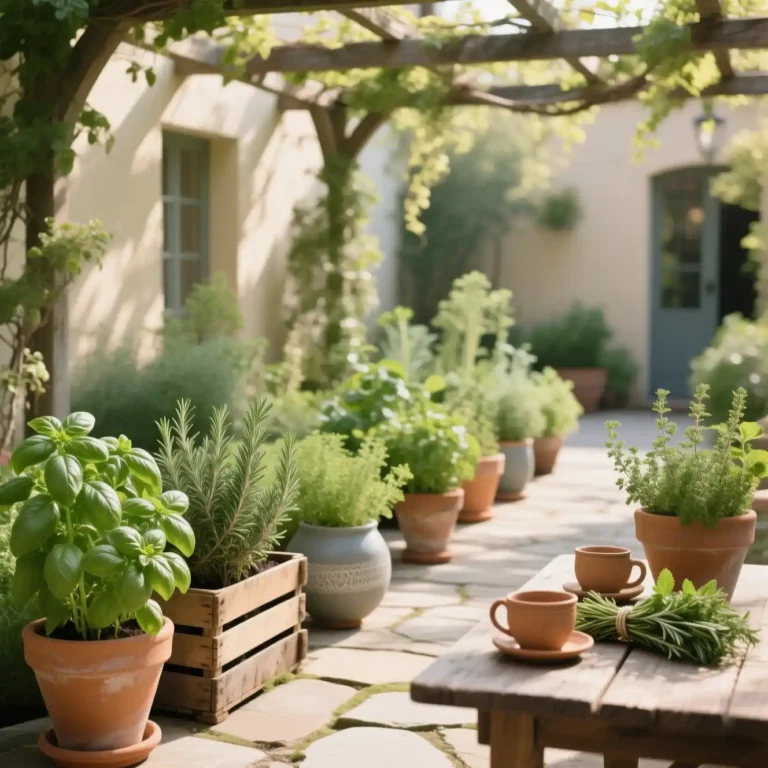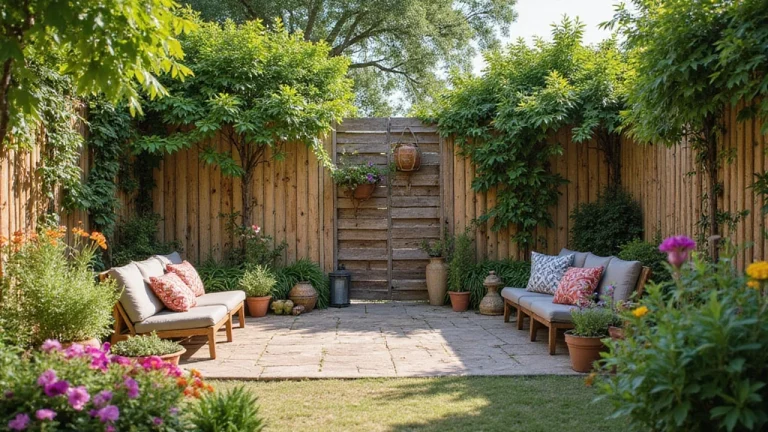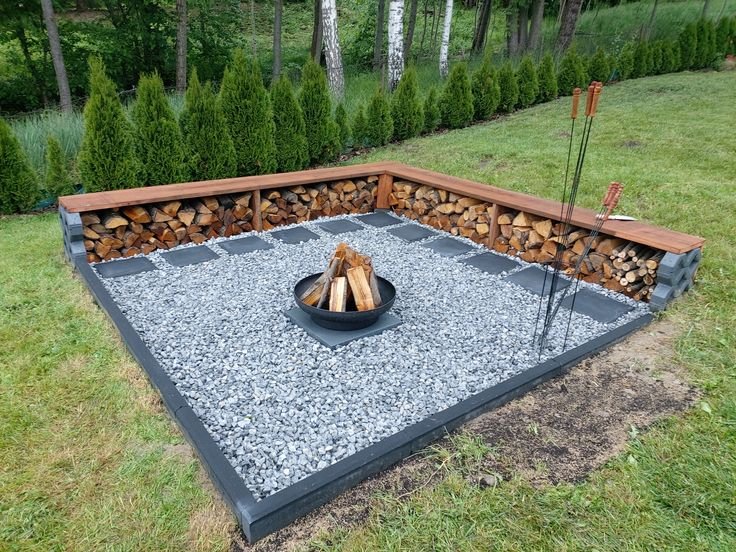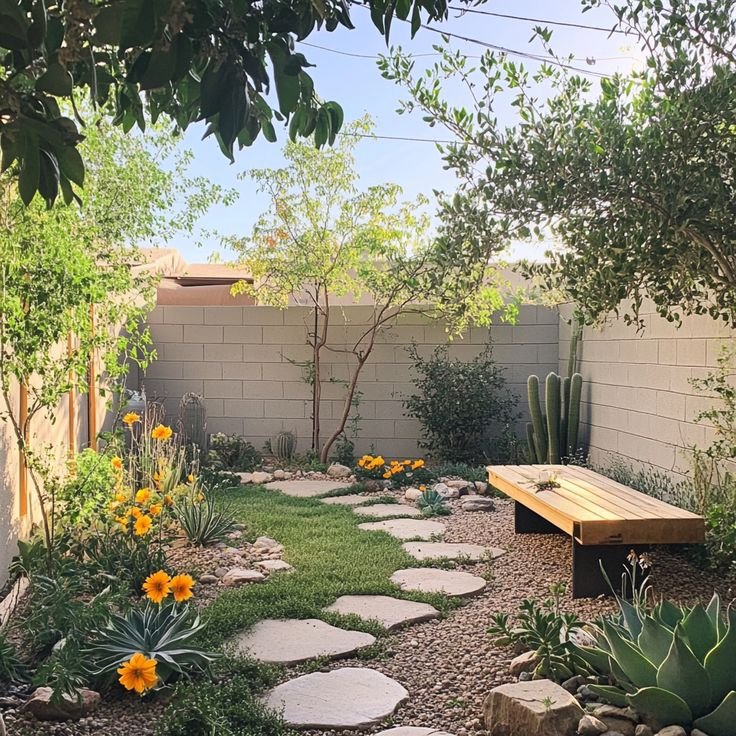Discover Inspiring Styles for Small Japanese Courtyard Garden Makeover
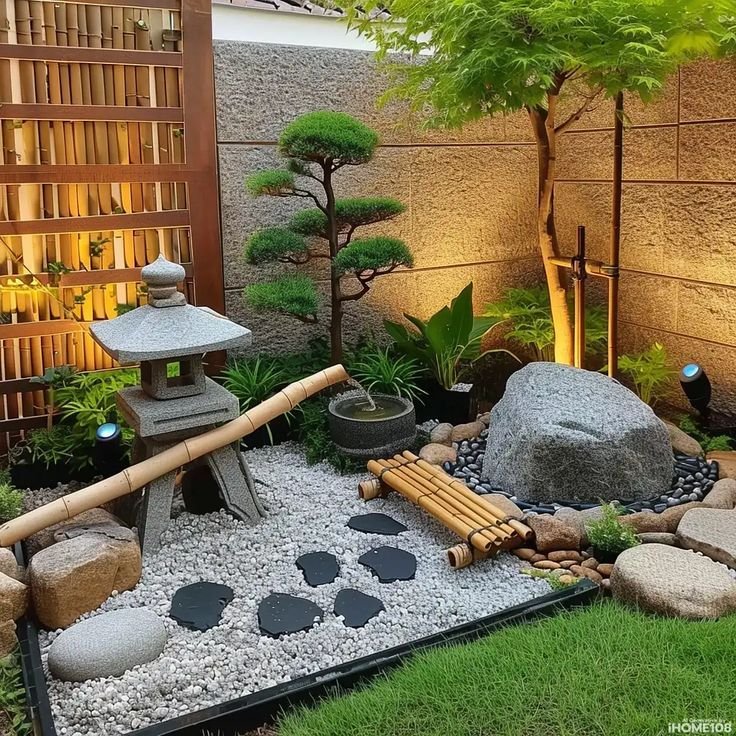
Courtyards present a unique challenge. They’re enclosed spaces that can feel cramped and forgotten, or they can become your home’s most magical retreat.
Most homeowners struggle with these intimate outdoor areas, leaving them bare or using them as storage zones that waste incredible potential.
Japanese courtyard garden makeover ideas solve this problem beautifully. Traditional Japanese design excels at transforming small, enclosed spaces into serene gardens that feel spacious despite tight boundaries.
These gardens turn limitations into advantages, using walls and enclosure to create intimate worlds separate from surrounding chaos.
We’re covering 33 Japanese courtyard garden makeover ideas that work for urban courtyards, side yards, atriums, and any enclosed outdoor space.
You’ll find water features, stone arrangements, plant selections, and design principles specifically suited to contained areas with unique light conditions and spatial constraints.
From minimalist Zen approaches to lush moss gardens, these ideas help you create a courtyard that becomes your home’s peaceful heart.
Whether your courtyard measures 50 square feet or 500, these concepts adapt to your specific space and bring traditional Japanese tranquility to modern living.
Why Courtyards Suit Japanese Design Perfectly
- Enclosed Spaces Match Traditional Forms: Historical Japanese gardens often occupied small courtyard areas within homes and temples where boundary walls were design assets rather than limitations. It’s like working with a proven template where constraints become creative opportunities. The enclosed nature provides privacy and intimacy that open yards can’t achieve.
- Limited Space Demands Thoughtful Selection: Courtyards force you to choose each element carefully since there’s no room for clutter or random additions. It’s like writing poetry where every word carries weight versus prose that allows rambling. This constraint aligns perfectly with Japanese aesthetic principles valuing restraint and intention.
- Controlled Environments Enable Microclimates: Walls protect courtyards from wind while creating shade patterns and moisture retention that benefit specific plants. It’s like having a specialized growing chamber where conditions differ from your main yard. These microclimates let you grow plants that might struggle in exposed locations.
- Viewing From Inside Changes Design Approach: Courtyards visible through windows function as living art viewed from interior spaces throughout the day. It’s like framing nature as a constantly changing painting you experience while inside your home. This inside-outside connection defines Japanese courtyard design where gardens serve as visual meditation aids.
33 Small Japanese Courtyard Garden Ideas
Transform your enclosed outdoor space with these Japanese courtyard garden ideas perfect for creating tranquil retreats in limited areas.
Miniature Zen Rock Garden
Create a scaled-down karesansui using fine gravel and small stones in your compact courtyard. The raked patterns represent water flowing around stone islands. It’s like distilling ocean and mountain landscapes into desktop size where symbolism matters more than scale.
Select three to five small rocks with interesting shapes and arrange them asymmetrically in raked gravel. The minimal maintenance and water-free design suit courtyards perfectly. Rake fresh patterns weekly as a meditative practice that renews the garden’s appearance.
Vertical Bamboo Screening
Install bamboo poles vertically along courtyard walls to soften hard surfaces while adding authentic Japanese character. The natural material weathers beautifully and creates visual rhythm through repetition. It’s like dressing your walls in natural texture that transforms bare surfaces into designed elements.
Attach bamboo poles at 4 to 6-inch intervals using hidden brackets or wire. The vertical lines draw the eye upward, making enclosed spaces feel taller. Bamboo’s hollow sound when tapped adds subtle audio dimension to your courtyard experience.
Central Water Basin Feature
Position a tsukubai water basin as your courtyard’s focal point where trickling water provides soothing sound. The stone construction anchors the space while water movement adds life. It’s like installing a meditation aid that engages sight, sound, and creates peaceful ambiance simultaneously.
Choose compact basin sets designed for small spaces, typically 2 to 3 feet across. The recirculating pump requires electrical access but uses minimal power. Surround the basin with moisture-loving plants like ferns that thrive near constant water presence.
Moss Carpet Foundation
Replace traditional groundcover with velvety moss that thrives in courtyard shade and creates distinctly Japanese aesthetic. The soft green carpet requires no mowing and feels primordial underfoot. It’s like installing living velvet that transforms your courtyard floor into contemplative surface.
Select moss varieties suited to your region’s climate and courtyard’s light levels. Keep consistently moist during establishment, then water during dry periods. Remove fallen leaves regularly to prevent smothering the delicate moss surface beneath debris.
Single Specimen Japanese Maple
Plant one carefully chosen Japanese maple as your courtyard’s living centerpiece that provides year-round interest. The delicate foliage and branching structure create natural sculpture that changes seasonally. It’s like having a performing artist who presents different shows throughout the year.
Choose varieties sized appropriately for your space—compact cultivars like ‘Shaina’ or ‘Crimson Queen’ suit small courtyards. Position the maple where you’ll see it from primary indoor viewing points. Under-plant with shade-tolerant groundcovers that complement without competing visually.
Stone Stepping Path
Create a winding path using irregular flat stones that guide movement through your courtyard. The stones slow your pace and create visual interest across the ground plane. It’s like choreographing how people experience your garden through deliberate stone placement.
Space stones at comfortable walking intervals—slightly closer than your natural stride to encourage mindful stepping. Surround stones with moss, gravel, or low plants depending on aesthetic preference. The meandering route makes small spaces feel larger by preventing direct sight lines across the entire courtyard.
Wall-Mounted Bamboo Fountain
Install a bamboo water spout mounted to your courtyard wall where water flows into a basin below. The space-saving design provides water’s benefits without floor footprint. It’s like hanging artwork that flows and sounds rather than remaining static on walls.
Mount the bamboo spout at eye level with a collection basin secured at ground level. The wall installation works perfectly for narrow courtyards where floor space is precious. Pump equipment hides behind the basin or mounts discreetly on the wall structure.
Layered Stone Arrangements
Group stones of varying sizes in triangular compositions that represent mountains or islands. The rock arrangements add sculptural permanence and require zero maintenance. It’s like placing natural sculptures that ground your courtyard design in timeless materials.
Follow odd-number groupings—three or five stones work better than even numbers. Position larger stones as anchors with smaller ones supporting the composition. The negative space between stones matters as much as the rocks themselves in Japanese design philosophy.
Pruned Pine Specimen
Train a pine tree using niwaki techniques that reveal branching structure and create cloud-like foliage pads. The artistic pruning transforms ordinary evergreens into living art. It’s like treating your courtyard tree as a large bonsai that showcases refined horticultural skill.
Start with young pine trees that accept training readily—Japanese black pine or mugo pine work well. Prune during dormant seasons to shape the tree gradually over years. The distinctive form becomes your courtyard’s signature element visible from indoor spaces.
Gravel Ground Cover
Replace grass or bare dirt with light-colored gravel that brightens shady courtyards and provides clean, low-maintenance surface. The stone’s texture adds visual interest without competing for attention. It’s like giving your courtyard a neutral canvas that showcases plants and features.
Install landscape fabric beneath gravel to suppress weeds while allowing drainage. Choose pea gravel or crushed granite in sizes small enough for comfortable walking. Rake occasionally to refresh the surface and remove debris that accumulates over time.
Enclosed Bamboo Grove
Plant clumping bamboo varieties that create a mini forest within courtyard boundaries. The vertical growth and rustling leaves add movement and sound. It’s like installing a living wall that grows upward rather than spreading invasively across limited space.
Select non-invasive clumping species like Bambusa multiplex in sizes appropriate for your courtyard height. Plant in containers if root spread concerns exist despite choosing clumping varieties. The dense growth provides maximum privacy screening in minimal footprint areas.
Stone Lantern Placement
Position a traditional Japanese stone lantern as a sculptural focal point that provides subtle lighting. The weathered stone develops character over time while anchoring your design. It’s like placing functional sculpture that serves as both art and practical illumination.
Choose lantern styles suited to your space scale—smaller Oribe or Kasuga lanterns for compact courtyards. Position near the basin, pathway, or viewing point where its presence feels natural. LED inserts provide modern lighting without compromising traditional aesthetic.
Sliding Shoji Screen Wall
Install translucent shoji screens along one courtyard wall to diffuse light and add authentic Japanese architectural element. The paper panels glow beautifully when backlit by sun. It’s like creating a light sculpture that changes throughout the day as sun angles shift.
Build or purchase weatherproof shoji using acrylic panels instead of traditional paper for outdoor durability. The screens can slide to reveal garden views or close for privacy and light diffusion. The geometric pattern adds visual structure to blank wall surfaces.
Azalea Border Planting
Mass-plant evergreen azaleas along courtyard perimeters for spring color bursts and year-round green structure. The compact shrubs suit small spaces while providing seasonal drama. It’s like programming your courtyard with natural fireworks that announce spring’s arrival.
Choose varieties in traditional colors—pinks, whites, and reds—rather than modern hybrid hues. Prune after flowering to maintain compact forms that don’t overwhelm tight spaces. The coordinated bloom time creates anticipated events in your courtyard calendar.
Raked Sand Patterns
Create temporary art by raking patterns in sand or fine gravel around key elements. The designs change regularly, keeping your courtyard feeling fresh. It’s like having a canvas you erase and redraw frequently where impermanence becomes part of the garden’s nature.
Use a specialized Japanese rake or garden rake to create wave patterns, straight lines, or circular designs. The practice becomes meditative while maintaining your courtyard’s appearance. Refresh patterns weekly or after rain disrupts the designs.
Evergreen Foundation Planting
Select compact evergreen shrubs that provide year-round structure and greenery. The permanent foliage ensures your courtyard looks intentional even in winter. It’s like building a garden backbone that doesn’t disappear seasonally.
Choose plants like boxwood, Japanese holly, or dwarf conifers that maintain shape with minimal pruning. The evergreens frame other elements and provide consistent green backdrop for seasonal interest. Their reliable presence creates stability in small courtyard spaces.
Water Lily Container
Feature a large ceramic bowl filled with water and floating water lilies. The aquatic display adds horizontal water surface and colorful blooms. It’s like creating a miniature pond that fits on your courtyard floor without excavation.
Select frost-proof ceramic bowls at least 18 inches across and 10 inches deep. Plant hardy water lily varieties that bloom reliably in containers. The still water surface reflects sky and surrounding elements while lilies provide summer color.
Torii Gate Entrance
Frame your courtyard entrance with a small torii gate that marks the transition into peaceful space. The symbolic arch signals you’re entering somewhere special. It’s like creating a threshold between everyday areas and your contemplative retreat.
Scale the gate appropriately for residential courtyards—6 to 7 feet tall rather than massive temple sizes. Paint it traditional red-orange or leave natural wood depending on your aesthetic. Position it where people pass through naturally when entering the courtyard space.
Fern Shade Garden
Fill shady courtyard corners with varied fern species that thrive without direct sun. The lacy fronds add texture and create lush feeling in difficult conditions. It’s like celebrating shade rather than fighting it by choosing plants that prefer your courtyard’s natural conditions.
Select ferns native to your region for best performance—Japanese painted ferns, autumn ferns, or sword ferns. Group different varieties together for textural contrast while maintaining cohesive green palette. Ferns appreciate consistent moisture and organic soil enrichment.
Wooden Deck Platform
Install a low wooden platform that serves as viewing area and engawa-inspired transition space. The elevated deck provides comfortable seating while defining areas within your courtyard. It’s like creating a stage for experiencing your garden from deliberate vantage points.
Build using weather-resistant cedar or composite materials in natural tones. Keep the platform low—12 to 18 inches—to maintain visual connection with garden elements. Simple construction without railings preserves Japanese aesthetic unless safety requires them.
Accent Lighting Design
Incorporate subtle LED lighting that illuminates key features without overwhelming your courtyard’s peaceful mood. The nighttime transformation extends courtyard enjoyment beyond daylight hours. It’s like revealing a second garden that emerges after dark.
Use low-voltage LED fixtures to uplight specimen plants, illuminate pathways, or accent stone arrangements. Warm color temperatures around 2700K create inviting glow rather than harsh brightness. Timer controls automate lighting so your courtyard welcomes you each evening.
Moss-Covered Stones
Allow moss to colonize stones naturally or encourage growth by applying buttermilk mixtures. The green-covered rocks blend nature and hardscape beautifully. It’s like aging your garden instantly where new elements gain the patina of time.
Select porous stones that hold moisture and place them in shady, damp courtyard areas. Moss establishes gradually over months, requiring patience but minimal intervention. The soft green coating creates ancient appearance that enhances Japanese aesthetic.
Narrow Side Garden
Transform awkward side yard spaces into linear Japanese gardens using vertical elements and narrow plantings. The corridor-like space becomes an asset rather than a limitation. It’s like designing a scroll garden that unfolds as you walk its length.
Use tall bamboo, narrow evergreens, or trained espalier trees that grow vertically without spreading laterally. Layer stones along the path and add wall-mounted features that don’t consume floor space. The confined corridor creates intimate garden experience unique to narrow courtyards.
Sand and Stone Dry Stream
Create a permanent dry riverbed using stones arranged to suggest water flow. The installation mimics seasonal streams while requiring no actual water. It’s like capturing a moment of flowing water in stone that remains static yet suggests movement.
Lay larger stones at stream edges with smaller ones toward the center. Use sand or fine gravel between stones to suggest flowing water. Position the stream to follow natural drainage patterns so rain temporarily activates your designed watercourse.
Sculptural Driftwood Display
Feature weathered driftwood pieces as natural sculpture that adds organic form without living plant requirements. The wood’s character and shape create focal points. It’s like displaying nature’s own artwork that requires zero maintenance.
Select pieces with interesting shapes, natural curves, or unusual grain patterns. Position driftwood prominently where its form reads clearly against simpler backgrounds. The weathered material develops silver patina that grows more beautiful over time.
Courtyard Bonsai Collection
Display bonsai trees on stands or benches as living art pieces suited to small spaces. The miniature trees provide all the interest of full-sized specimens in compact form. It’s like having a tree collection that fits within courtyards measuring just feet across.
Choose bonsai varieties appropriate for your climate and available light—junipers for sun, maples for partial shade. Rotate trees between display and growing areas to prevent stress from constant public viewing. The collection becomes a hobby that enhances your courtyard aesthetically.
Ornamental Grass Accents
Incorporate Japanese forest grass or similar ornamental varieties that provide movement and soft texture. The flowing blades sway in the slightest breeze, adding motion. It’s like installing living fountains that flow through air rather than water.
Select shade-tolerant varieties like Hakonechloa macra for typical courtyard conditions. The golden or variegated cultivars brighten dark corners beautifully. Grasses contrast nicely with the solid forms of stones and evergreen shrubs.
Roji Tea Garden Style
Design your courtyard as a roji—the approach path to tea houses—using stepping stones, lanterns, and a water basin. The elements prepare visitors mentally for tea ceremony. It’s like creating a transitional space that shifts mindset from everyday to contemplative.
Follow traditional roji sequences with outer, middle, and inner sections that increase in refinement. The path winds deliberately rather than taking direct routes. Each element—stone, plant, water feature—serves the purpose of quieting the mind.
Wall-Mounted Plant Shelves
Install floating shelves on courtyard walls to display potted plants vertically. The elevated planting conserves floor space while adding greenery at multiple levels. It’s like creating a living wall using individual pots that you can rearrange easily.
Mount weatherproof shelves at varying heights to create visual interest. Display small ferns, hostas, or trailing plants in coordinating containers. The vertical garden transforms blank walls into planted surfaces without permanent installation.
Black Pine Niwaki
Train Japanese black pine using cloud pruning techniques that create distinctive layered appearance. The shaped pine becomes your courtyard’s signature element showcasing refined skill. It’s like having a living sculpture that improves with age and ongoing training.
Start with young specimens that accept shaping readily. Prune twice yearly to maintain cloud forms and reveal branching structure. The dramatic silhouette creates strong visual impact even in small courtyard spaces.
Minimalist White Garden
Create a monochromatic design using white stones, white-flowering plants, and silver-green foliage. The restrained palette feels sophisticated and spacious. It’s like painting your courtyard in grayscale where subtle variations create interest without color chaos.
Choose white gravel as ground cover and white-flowering azaleas, gardenias, or camellias for seasonal bloom. Add silver-leaved plants like dusty miller or lamb’s ear for textural contrast. The light colors brighten shady courtyards significantly.
Sunken Seating Area
Create a slightly lowered seating zone that provides intimate gathering space while maintaining garden views. The sunken area feels protected and special. It’s like carving out a private nook within already enclosed courtyard boundaries.
Excavate 12 to 18 inches and install built-in benches or place low furniture in the depression. The lowered perspective changes how you experience surrounding garden elements. Ensure proper drainage to prevent water pooling in the sunken area.
Courtyard View Framing
Position plants and structures to frame specific views from primary indoor windows. The deliberate composition creates living art visible from inside. It’s like hanging paintings that change seasonally while you watch from interior comfort.
Identify key viewing angles from kitchen windows, living spaces, or bedrooms. Arrange your most beautiful elements—specimen maple, stone lantern, water basin—where these sightlines focus. The framed views provide meditation focal points throughout your day.
Creating Balance in Small Spaces
- Use Odd Numbers in Groupings: Arrange elements in groups of three, five, or seven rather than even numbers that feel too symmetrical. It’s like composing photographs where odd groupings create more dynamic visual interest. This principle applies to stones, plants, and decorative objects throughout your courtyard.
- Embrace Empty Space as Design Element: Resist filling every courtyard inch with plants or objects—negative space provides visual rest. It’s like musical rests between notes where silence makes sound more meaningful. The empty areas make your chosen elements appear more significant and intentional.
- Layer Different Heights: Create visual depth by mixing ground-level elements with mid-height plants and vertical features. It’s like building a landscape in three dimensions rather than flat surface. The varied elevations make small courtyards feel more complex and interesting.
- Maintain Consistent Color Palette: Limit your courtyard to three or four primary colors to prevent visual chaos in tight spaces. It’s like editing your wardrobe to coordinating pieces rather than wearing every color simultaneously. The restraint creates sophisticated cohesion that makes spaces feel larger.
Frequently Asked Questions About Japanese Courtyard Gardens
How Do You Handle Poor Drainage in Courtyards?
Install French drains along perimeters or beneath gravel surfaces to channel water away effectively. Consider raising planting beds slightly to improve drainage while creating dimensional interest. Some designs embrace water by incorporating rain gardens or water features that function during storms. Gravel surfaces provide excellent drainage while maintaining Japanese aesthetic if proper base layers are installed beneath the visible stone.
What Plants Work for Very Shady Courtyards?
Focus on shade-loving species like ferns, hostas, Japanese forest grass, and evergreen shrubs such as aucuba or fatsia. Moss thrives in shade and creates authentic Japanese ground cover. Shade-tolerant Japanese maples like ‘Shaina’ provide structure without requiring full sun. Embrace your shade as an asset that allows you to create lush green gardens where sun-loving plants would struggle unsuccessfully.
Can You Create Japanese Courtyards Without Water Features?
Absolutely—dry gardens using stone and gravel excel in courtyards where water installation isn’t feasible. The karesansui style represents water symbolically through raked gravel patterns around stones. These dry gardens require less maintenance and avoid issues with pumps, electricity, and winter freezing. The symbolic representation carries equal aesthetic and philosophical weight as actual water features.
How Much Maintenance Do Courtyard Gardens Require?
Well-designed Japanese courtyards need regular but manageable attention—weekly raking, seasonal pruning, and occasional cleaning. The enclosed nature means less leaf litter from surrounding areas and protection from wind-blown debris. Initial establishment requires more care while plants settle and you learn proper techniques. Once mature, maintenance becomes meditative practice rather than burdensome chore.
Should Courtyards Match Your Home’s Interior Style?
Japanese courtyards work with various architectural styles from traditional to modern, though contemporary homes often showcase them most successfully. The key is ensuring the transition from interior to courtyard feels intentional rather than jarring. Use materials, colors, or finishes that bridge both spaces—similar wood tones, complementary colors, or shared design simplicity. The courtyard should feel like an outdoor room that extends your home rather than a disconnected separate space.
Your Private Garden Sanctuary
Japanese courtyard gardens transform overlooked spaces into your home’s spiritual center. These intimate gardens provide daily beauty visible from interior rooms while offering outdoor retreats for quiet contemplation. The enclosed boundaries that seem limiting actually create the privacy and focus that make courtyards so special.
Start by observing your courtyard’s existing conditions—light patterns, drainage, views from inside—then design around these realities rather than fighting them. The best courtyard gardens work with what’s there, turning challenging conditions into design opportunities. Build gradually, living with each addition before layering more elements.
Remember that courtyard gardens exist at the intersection of inside and outside, serving both as outdoor rooms and living artwork. Your design succeeds when it draws you outside regularly while providing beauty that enriches time spent indoors. The courtyard becomes a meditation aid, a nature connection point, and a daily reminder to pause. What vision calls to you for your courtyard space? Share your ideas in the comments below!

